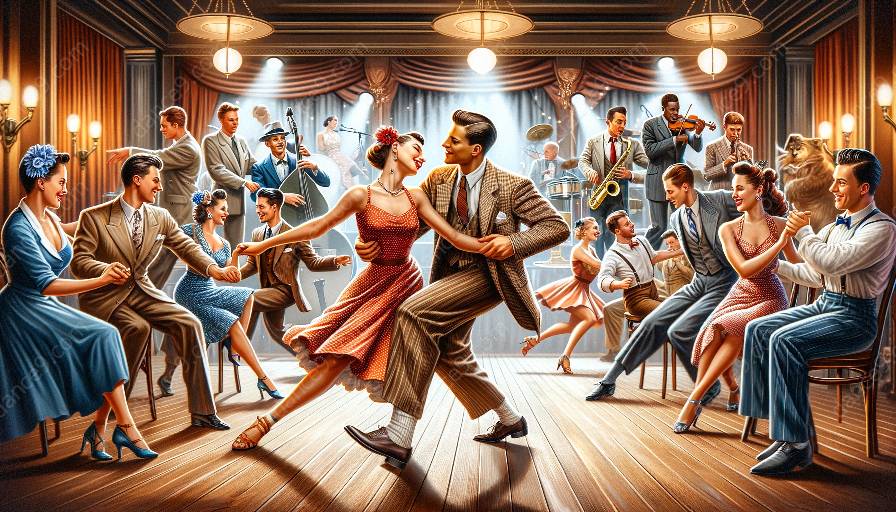Swing dance has had a profound impact on contemporary dance, influencing choreography, movement, and cultural expressions in dance classes. The unique rhythms, improvised nature, and social aspects of swing dance have contributed to the evolution of contemporary dance styles. This topic cluster will delve into the historical roots of swing dance, its influence on contemporary dance, and its relevance in modern-day dance classes.
The Origins of Swing Dance
The roots of swing dance can be traced back to the 1920s and 1930s in African-American communities, particularly in the jazz music scene. It emerged as a partner dance and quickly gained popularity as a social dance form. The energetic and syncopated rhythms of swing music provided the foundation for the lively and dynamic movements of swing dance.
Connection to Contemporary Dance
The influence of swing dance on contemporary dance can be observed through the incorporation of its rhythmic patterns, syncopated footwork, and partner dynamics. Contemporary choreographers often draw inspiration from the joyful and exuberant spirit of swing dance, integrating its energy and fluidity into their dance compositions. Additionally, the playful and spontaneous nature of swing dance has contributed to the development of improvisational techniques in contemporary dance.
Impact on Dance Classes
Swing dance has not only influenced the artistic aspects of contemporary dance but has also impacted dance classes by introducing diverse movement vocabularies and social dance principles. Many dance instructors incorporate elements of swing dance into their classes to broaden students' understanding of rhythmic variations, connection with dance partners, and the historical significance of different dance styles. Furthermore, the inclusive and communal nature of swing dance has inspired collaborative and interactive learning environments in contemporary dance classes.
Evolution of Dance Styles
The influence of swing dance on contemporary dance has contributed to the evolution of various dance styles, such as Lindy Hop, Charleston, and Balboa. These traditional swing dance forms continue to inspire contemporary choreographic innovations and are often taught in specialized dance classes to preserve their rich cultural heritage. The fusion of swing dance elements with modern movement techniques has further expanded the creative possibilities within the realm of contemporary dance.
Relevance in Modern-Day Dance Classes
As the appreciation for vintage and retro aesthetics grows, swing dance continues to have a significant presence in modern-day dance classes. Its infectious rhythms, spirited social dynamics, and historical significance make it a compelling subject for dance enthusiasts of all ages. Dance classes that incorporate swing dance offer participants a unique opportunity to engage with the cultural legacy of this vibrant dance form while exploring its impact on contemporary movement practices.













































































